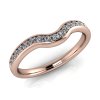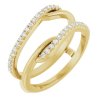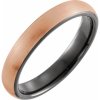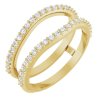Natural diamonds are among the most sought-after gemstones in the world. The value of a diamond is determined by the 4Cs: COLOR (diamond color), CLARITY (diamond clarity), CUT (diamond cut), and CARAT (diamond carat weight).
If you encounter the term 5Cs of diamonds, the fifth C refers to the CERTIFICATE. We provide a certificate with every diamond, whether natural or lab-created. You can read more about certificates here.

CUT
The cut refers to the way a diamond has been shaped and polished from its raw state. A quality cut maximizes the diamond's brilliance, fire, and scintillation by optimally capturing and reflecting light. 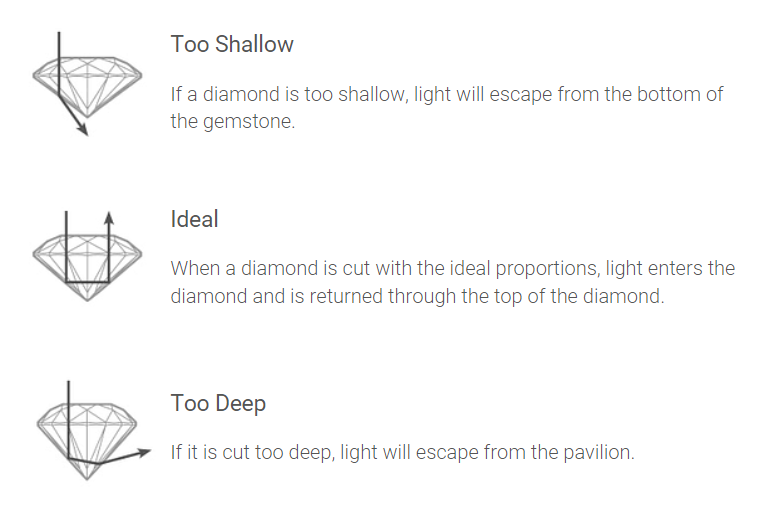
A good cut significantly impacts the overall appearance and value of a diamond. An important aspect is brilliance, which is the diamond's ability to reflect white light from both its surface and its interior.
Brilliance is crucial for the diamond's overall sparkle and shine, enhancing its aesthetic value and appeal.
COLOR
Another factor is the diamond's color. This criterion determines the diamond's hue, with the most valuable diamonds having minimal color.
Diamonds are graded on a scale from D (colorless) to Z (noticeably colored).
Colorless diamonds (D-F) are very rare and the most valuable because they allow the greatest light transmission and exhibit the highest brilliance. Diamonds with slight coloration (G-J) are also highly sought after, but their value decreases as the color intensity increases.
Color evaluation is performed in gemological institutions by manually comparing diamonds to a set of master stones, known as a color reference set, ensuring accurate and consistent results. The color of a diamond is important as it affects the overall appearance and aesthetics of the gemstone.
CLARITY
This characteristics concerns the presence and visibility of internal and external flaws, known as inclusions and blemishes.
- Inclusions: Internal flaws such as small cracks or foreign materials within the diamond.
- Blemishes: Surface flaws like scratches or irregularities.
Clarity is evaluated under 10x magnification and is graded on the following scale:
1. Flawless (FL): No visible flaws under 10x magnification.
2. Internally Flawless (IF): No internal flaws, only minor surface blemishes.
3. Very Very Slightly Included (VVS1, VVS2): Very, very small inclusions that are difficult to see under 10x magnification.
4. Very Slightly Included (VS1, VS2): Very small inclusions, visible under 10x magnification.
5. Slightly Included (SI1, SI2): Small inclusions, easily visible under 10x magnification.
6. Included (I1, I2, I3): Visible inclusions that can affect the diamond's transparency and brilliance.

The clarity of a diamond affects its brilliance and overall value. Diamonds with fewer and smaller inclusions and blemishes are rarer and more valuable.
CARAT WEIGHT
The weight of a diamond is measured in carats, with one carat equal to 200 milligrams. A carat is further divided into 100 points, so a 0.75-carat diamond can be referred to as a 75-point diamond.
Larger diamonds are rarer and therefore have a higher value per carat. This means that the price of a diamond increases exponentially with its size. For example, a two-carat diamond is not just twice as expensive as a one-carat diamond but often significantly more, due to its rarity.
When assessing the carat weight of a diamond, it is important to consider that two diamonds of the same weight can have different values depending on the other 4C factors: cut, color, and clarity.
The overall value of a diamond is the result of a combination of all these parameters.

WHAT IS THE DIFFERENCE BETWEEN THE ABBREVIATIONS CT AND KT?
Ct (carat): Ct is the abbreviation for carat, which is used to measure the weight of diamonds and other gemstones. One carat is equivalent to 200 milligrams (0.2 grams). This term is commonly used in jewelry to denote the weight of individual gemstones.
Kt (karat): Kt is the abbreviation for karat, which is used to indicate the purity of gold. In this context, karat measures the fineness of gold, with 24kt (24 karats) representing pure gold (100% gold). Lower karat values, such as 18kt or 14kt, indicate that the gold has been alloyed with other metals to increase its strength and durability.
In summary:
Ct (carat) is used to measure the weight of gemstones.
Kt (karat) is used to measure the purity of gold.

You can see each classification below and choose the ideal parameters for your diamond. Email us what kind of diamond you are looking for, and we will get back to you within 24 hours with a price offer.


